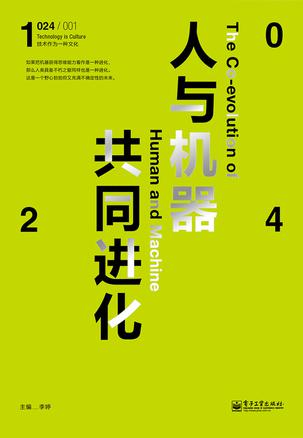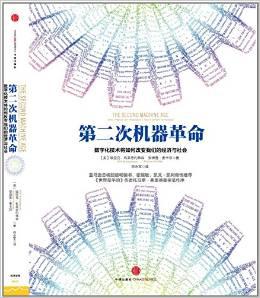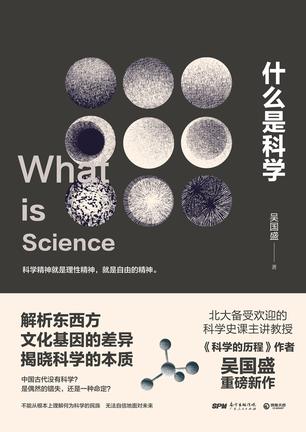-

Ice Age
-

1024·人与机器共同进化
《1024》:国内第一本专注于科技文化的mook。 本期创刊号将目光定焦在“人与机器”这个超热点领域。 如果把机器获得思维能力看作是一种进化, 那人类具备不朽之躯同样也是一种进化。 这是一个野心勃勃但又充满不确定性的未来。 在我们一厢情愿地猜测机器将在不远的将来赶超自己而惶惶不可终日时,人类其实还有一个机会——变得更像机器。这并非科幻小说,而是正在发生的现实。人类创造机器的初衷难道不就是为了弥补自身的不足?如果把机器获得思维能力看作是一种进化,那人类具备不坏之躯同样也是一种进化。这是一个野心勃勃但又充满不确定性的未来。八篇专题文章将解析在共同进化的漫长道路上,人与机器如何成为对方的投射,以及由此衍生出的永恒话题——伦理与道德的困境。 专栏文章中,“工具”独具匠心。它分为三个小部分:阐述人与工具的联系、具体工具的展示,以及使用工具制作,旨在凸显科技时代人和工具的新关系。“未来”则是由恒金基金会独家授权的SALT演讲,来自历史学家与未来学家的一次机锋。“遗产”将讲述《全球概览》近半个世纪前不可思议的出版故事,重现一次反主流文化之旅。 本期的收尾之作献给不久前去世的恩格尔巴特。感谢他留下的不朽遗产。愿他安息。 《1024》官网:http://1024.dongxi.net -

第二次机器革命
“一本非常鼓舞人心的书!”——托马斯•L•弗里德曼 《世界是平的》作者 一场革命开始了! 在《第二次机器革命》这本书中,埃里克•布莱恩约弗森和安德鲁•麦卡菲——这两位处于数字技术时代最前沿的思想家,向我们阐述了驱动我们经济和生活的发生变革的力量。他们认为,数字技术将会给我们带来难以想象的巨大变革:想象一下令人眩目的个人数字技术产品、一流的基础设施,都将会给我们带来极大的便利。数字技术(其核心是硬件、软件和网络)在不久的将来能够比医生更准确地诊断疾病,能够使用海量的数据改变零售行业,而且还能够相当人性化地完成很多工作。 数字化技术在给我们带来极大便利的同时,也给各种职业带来永久性、颠覆性的改变。各种公司也将被迫转型,否则只能消亡。凭借对数字化技术和社会发展趋势的精准研究,布莱恩约弗森和麦卡菲辨析出了最佳的生存与发展战略,也给我们找到了一条通向社会发展与繁荣的新路径。 这是一本充满积极和智慧力量的书,这本书将改变我们思考技术、社会和经济发展的方式。全球化是20世纪末期最重要的经济话题,有《世界是平的》为证;在21世纪初期,技术变革将会成为社会的热点话题,《第二次机器革命》可以为证。 【编辑推荐】 这是一个万物复苏、万物迸发、万物生长的时代。 一年是一年,那是200年前;一月是一年,属于20年前;一天是一年,那就是现在…… 数字化、智能化、自动化、摩尔定律、棋盘的另一半……重组式创新、指数级增长…… 有一种力量可以重塑、改写社会发展的进程, 更有一种力量可以左右你的世界,预判你的未来, 第二次机器革命时代来临了! 荣登亚马逊超级畅销书总榜,张瑞敏、凯文•凯利倾情推荐,《世界是平的》作者托马斯•弗里德曼盛赞此书是一本非常鼓舞人心的书! 在全球,自动化技术和机器人的崛起将是未来10年重大的社会变革,一场产品制造和智能革命即将开始!经济发展的进程将出现重大突破! 在中国,制造业升级、劳动力短缺、经济发展的转型将由第二次机器革命引导。习近平总书记说:“未来几十年,新一轮科技革命和产业变革将同人类社会发展形成历史性交汇,工程科技进步和创新将成为推动人类社会发展的重要引擎。” 数字化技术再掀社会浪潮,看我们的经济和社会将如何被改变。 -

The Nature of Technology
"More than any thing else technology creates our world. It creates our wealth, our economy, our very way of being," says W. Brian Arthur. Yet, until now the major questions of technology have gone unanswered. Where do new technologies come from -- how exactly does invention work? What constitutes innovation, and how is it achieved? Why are certain regions -- Cambridge, England, in the 1920s and Silicon Valley today -- hotbeds of innovation, while others languish? Does technology, like biological life, evolve? How do new industries, and the economy itself, emerge from technologies? In this groundbreaking work, pioneering technology thinker and economist W. Brian Arthur sets forth a boldly original way of thinking about technology that gives answers to these questions. The Nature of Technology is an elegant and powerful theory of technology's origins and evolution. It achieves for the progress of technology what Thomas Kuhn's The Structure of Scientific Revolutions did for scientific progress. Arthur explains how transformative new technologies arise and how innovation really works. Conventional thinking ascribes the invention of technologies to "thinking outside the box," or vaguely to genius or creativity, but Arthur shows that such explanations are inadequate. Rather, technologies are put together from pieces -- themselves technologies -- that already exist. Technologies therefore share common ancestries and combine, morph, and combine again to create further technologies. Technology evolves much as a coral reef builds itself from activities of small organisms -- it creates itself from itself; all technologies are descended from earlier technologies. Drawing on a wealth of examples, from historical inventions to the high-tech wonders of today, and writing in wonder fully engaging and clear prose, Arthur takes us on a mind-opening journey that will change the way we think about technology and how it structures our lives. -

The Nature of Technology
"More than any thing else technology creates our world. It creates our wealth, our economy, our very way of being," says W. Brian Arthur. Yet, until now the major questions of technology have gone unanswered. Where do new technologies come from -- how exactly does invention work? What constitutes innovation, and how is it achieved? Why are certain regions -- Cambridge, England, in the 1920s and Silicon Valley today -- hotbeds of innovation, while others languish? Does technology, like biological life, evolve? How do new industries, and the economy itself, emerge from technologies? In this groundbreaking work, pioneering technology thinker and economist W. Brian Arthur sets forth a boldly original way of thinking about technology that gives answers to these questions. The Nature of Technology is an elegant and powerful theory of technology's origins and evolution. It achieves for the progress of technology what Thomas Kuhn's The Structure of Scientific Revolutions did for scientific progress. Arthur explains how transformative new technologies arise and how innovation really works. Conventional thinking ascribes the invention of technologies to "thinking outside the box," or vaguely to genius or creativity, but Arthur shows that such explanations are inadequate. Rather, technologies are put together from pieces -- themselves technologies -- that already exist. Technologies therefore share common ancestries and combine, morph, and combine again to create further technologies. Technology evolves much as a coral reef builds itself from activities of small organisms -- it creates itself from itself; all technologies are descended from earlier technologies. Drawing on a wealth of examples, from historical inventions to the high-tech wonders of today, and writing in wonder fully engaging and clear prose, Arthur takes us on a mind-opening journey that will change the way we think about technology and how it structures our lives. -

什么是科学
本书直面现今国人科学概念的误区,即要么把科学等同于技术,等同于促进生产力发展的工具,要么把科学看成一种普遍存在的人类智力成就。作者指出:科学成为推动历史发展的强大动力只是十九世纪以后的现象,科学根源于希腊人对于自由人性的追求,因而是一种十分罕见的文化现象。现代科学起源于 希腊科学的复兴以及基督教内在的思想运动,对力量的追求、对自然的控制和征服成为现代科学的主导动机。在数理实验科学的意义上,中国古代并无科学。在博物学的意义上,中国古代有独特且强大的科学传统。